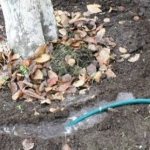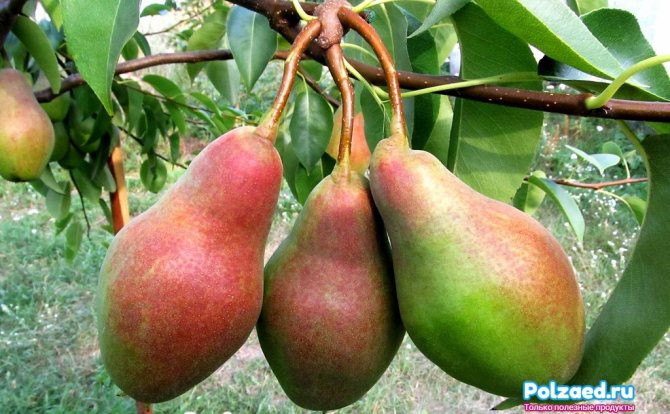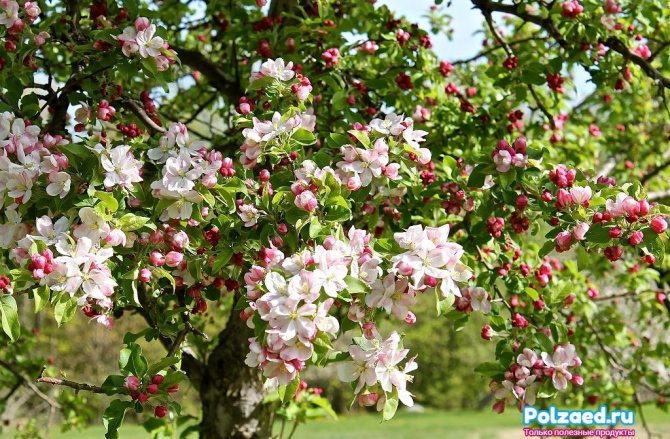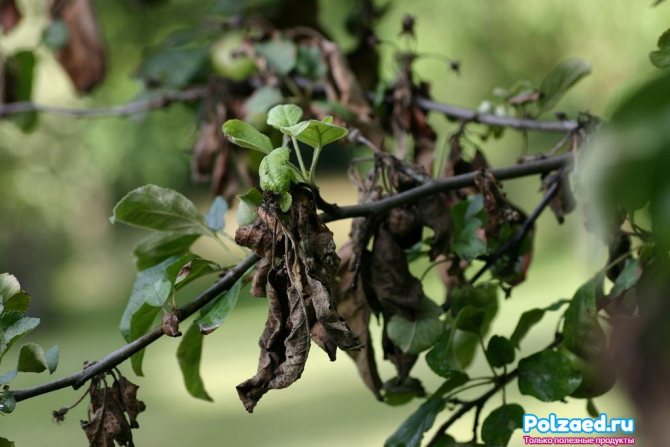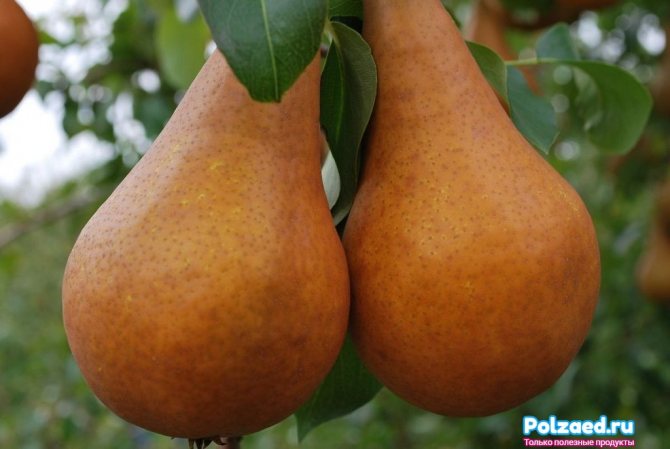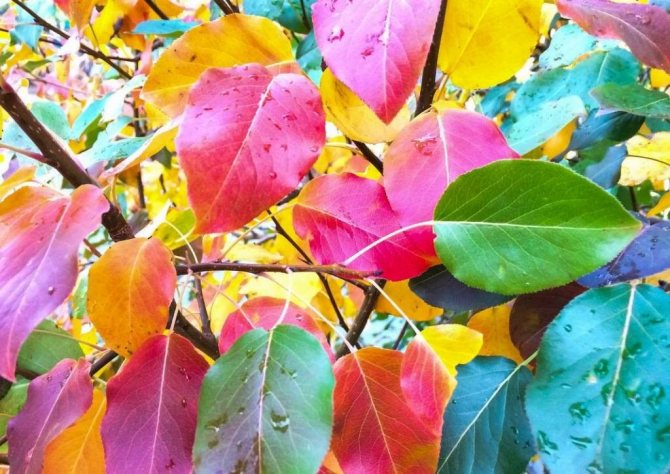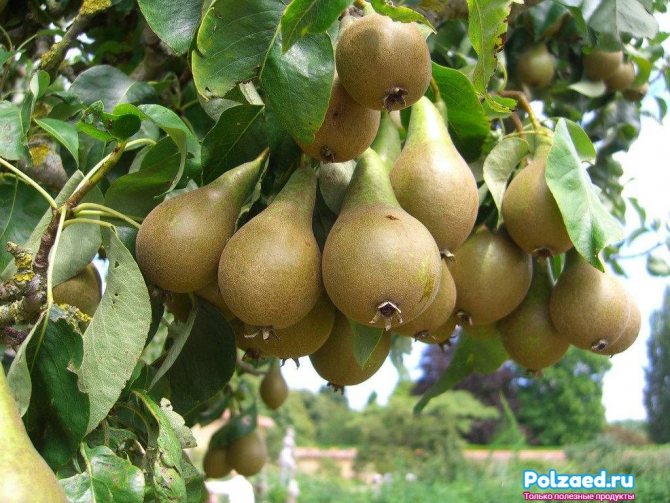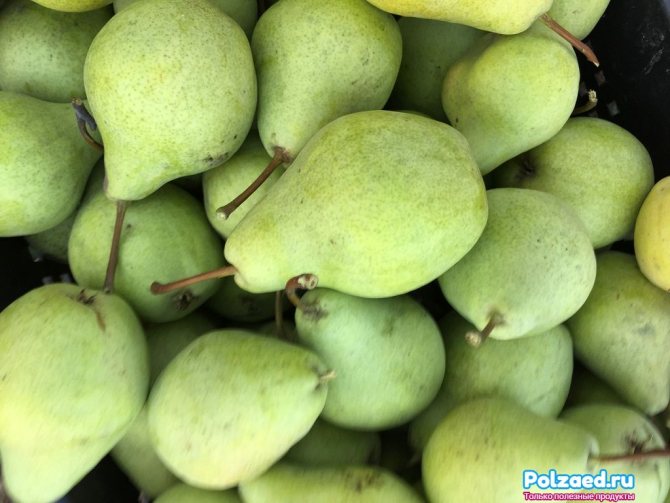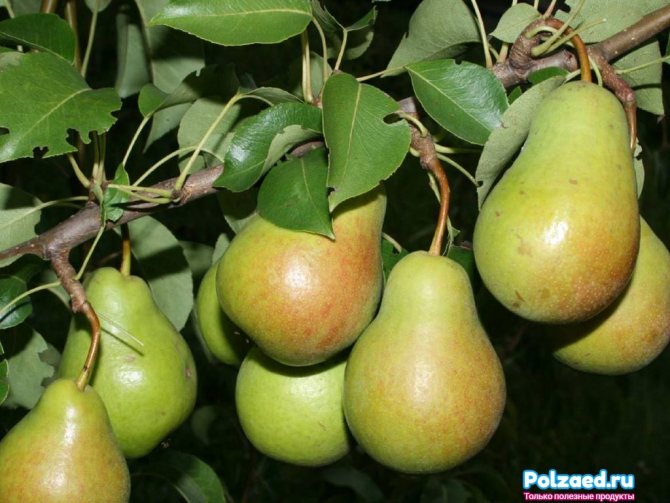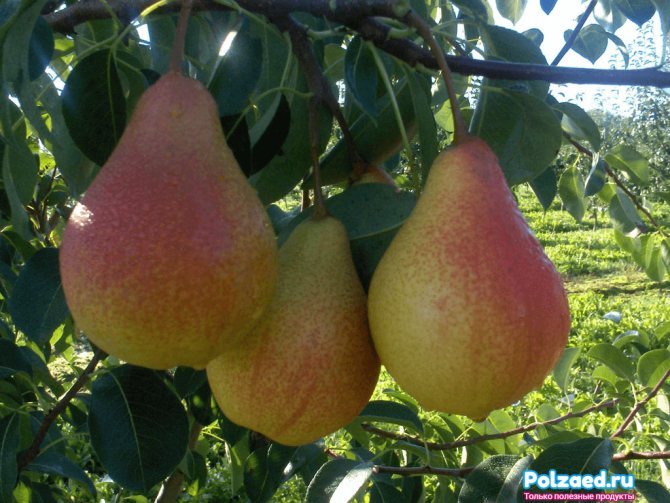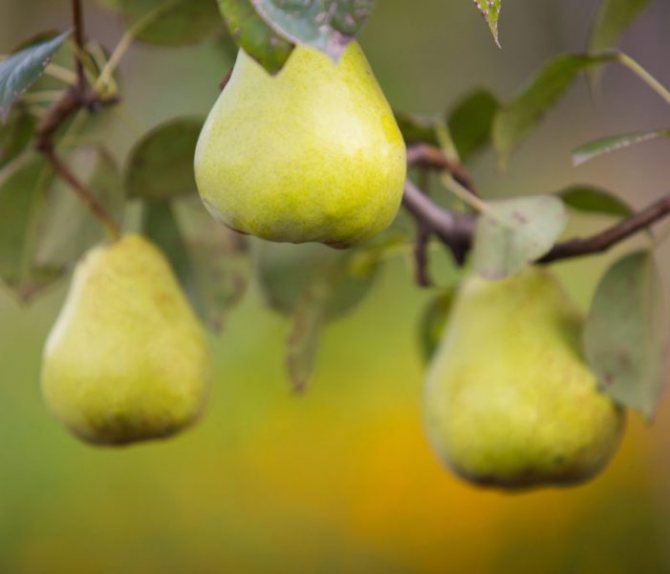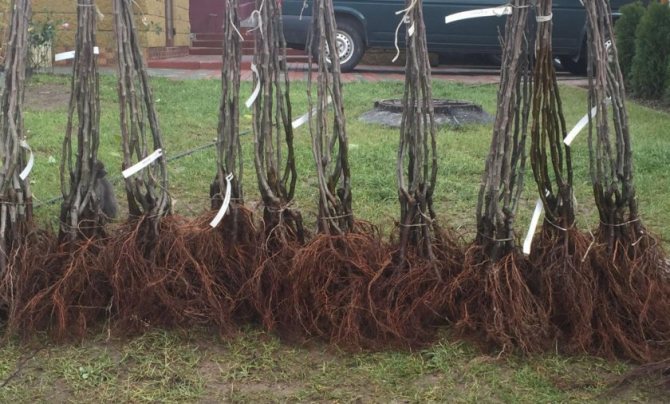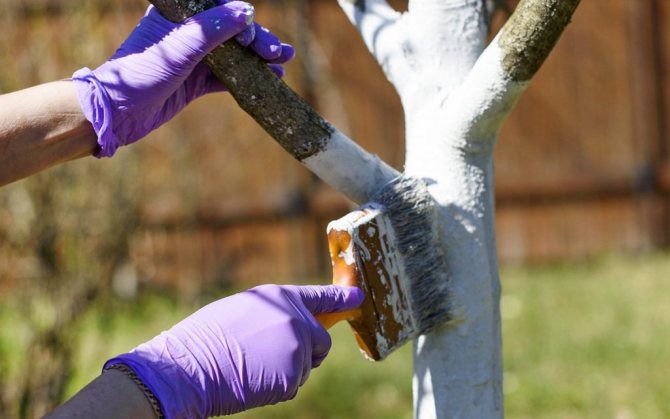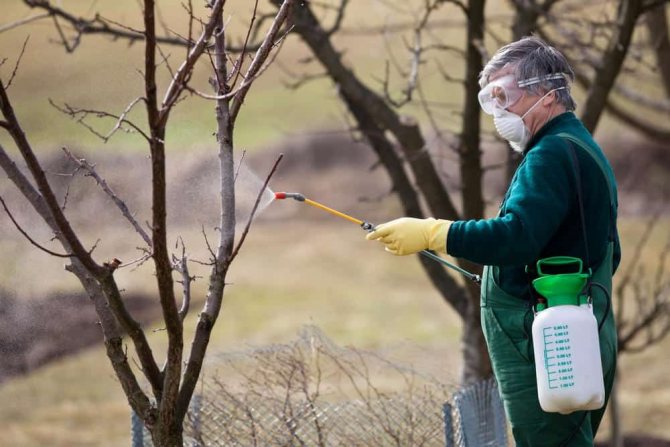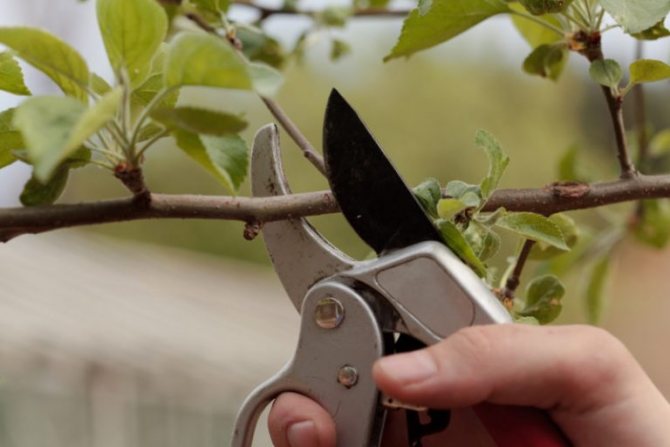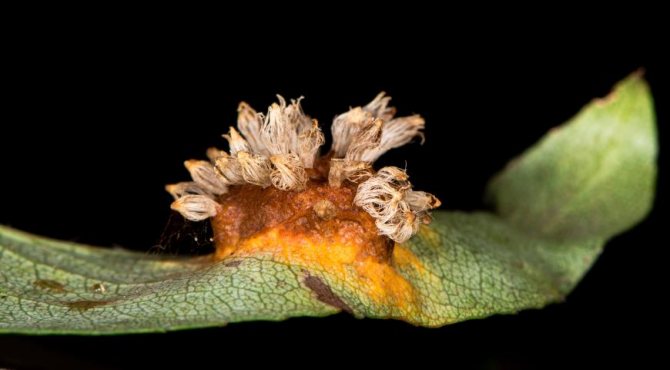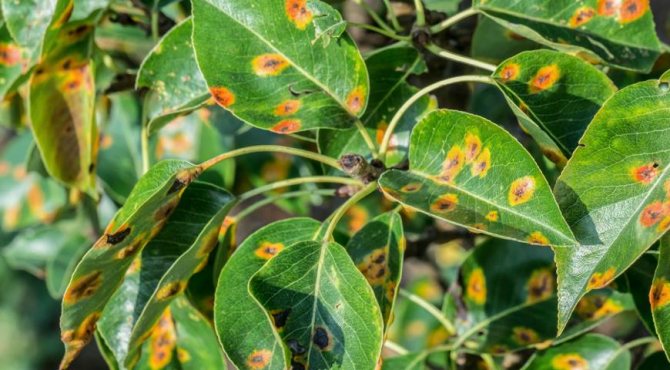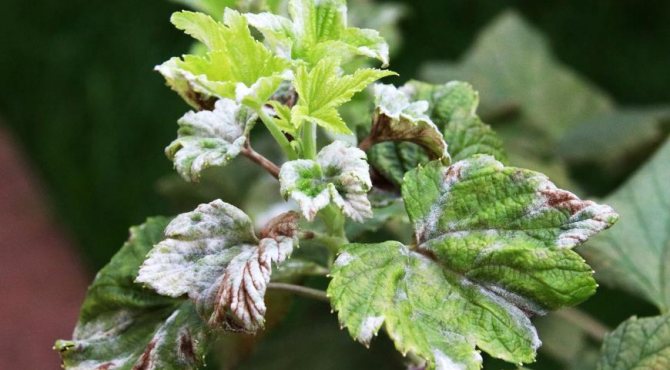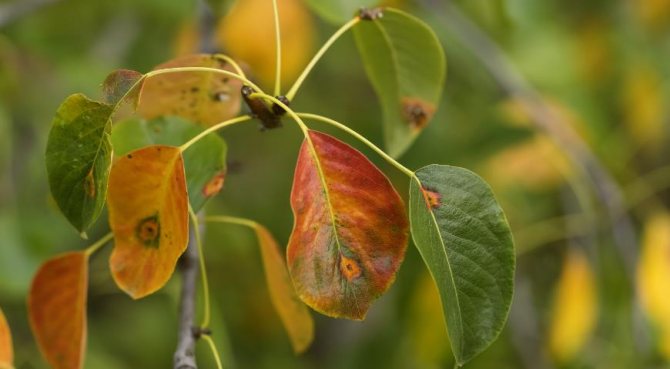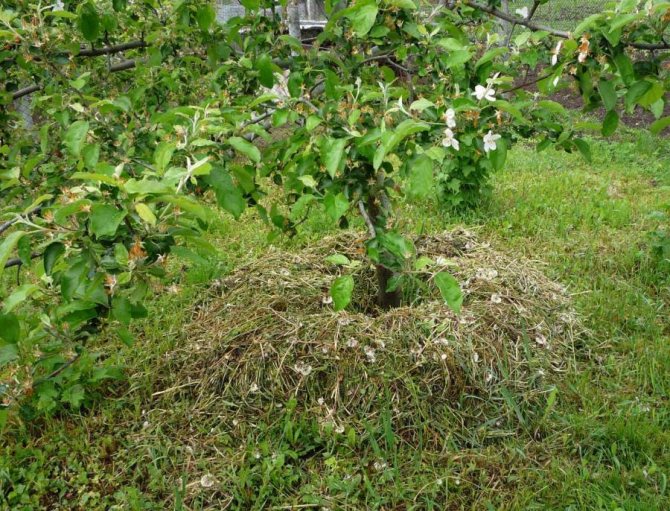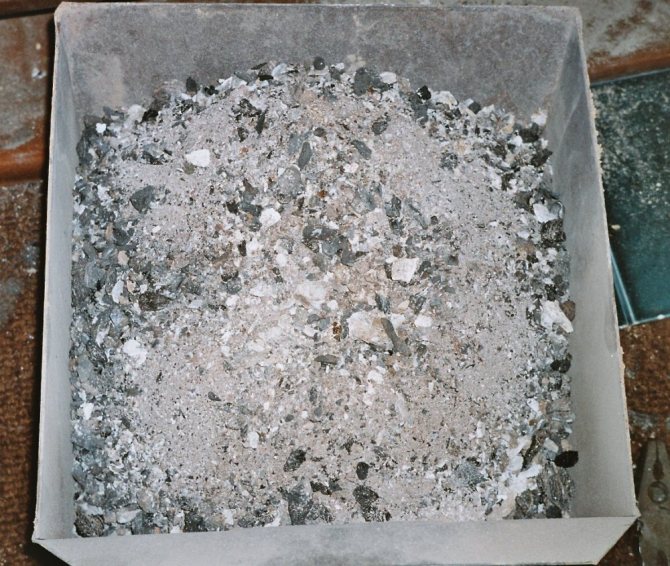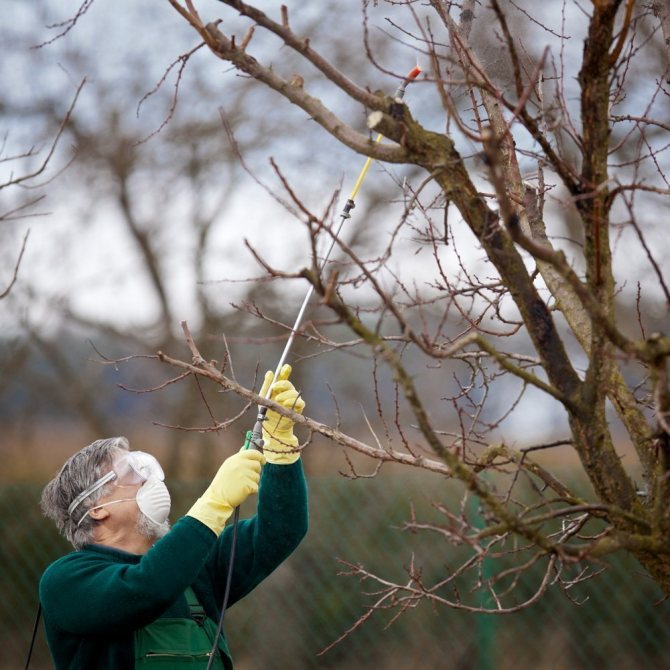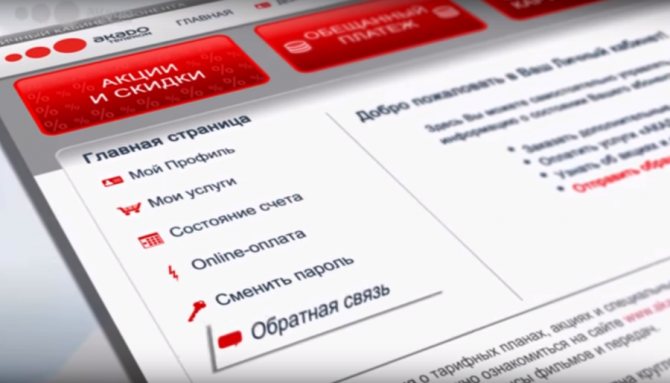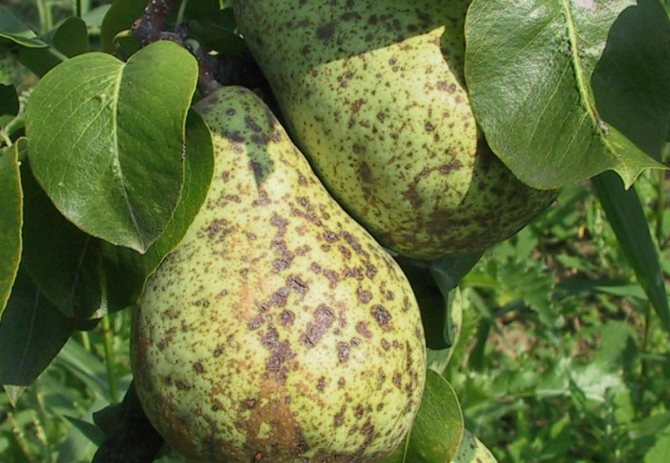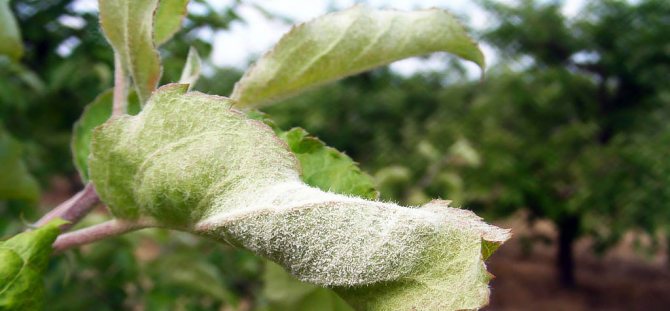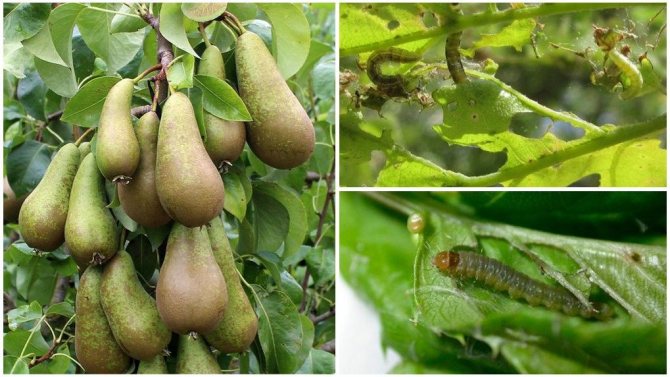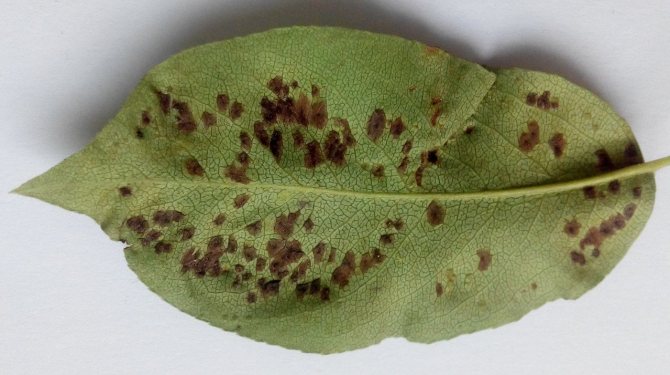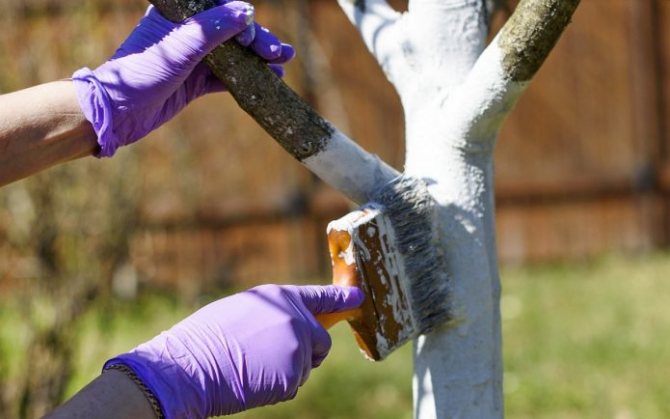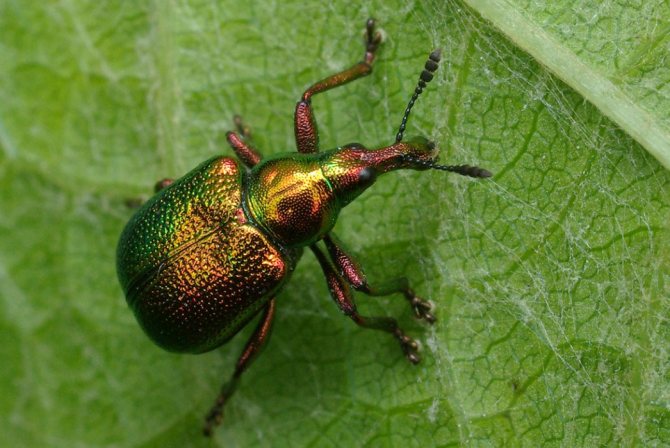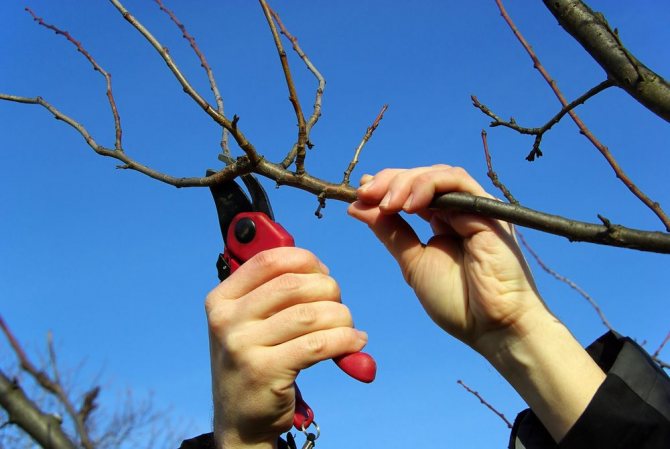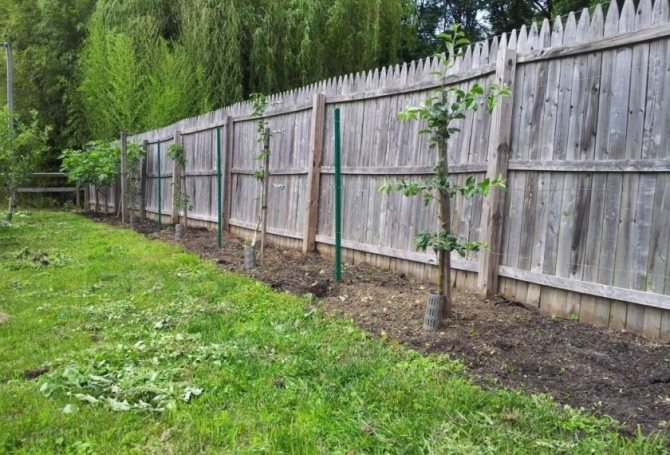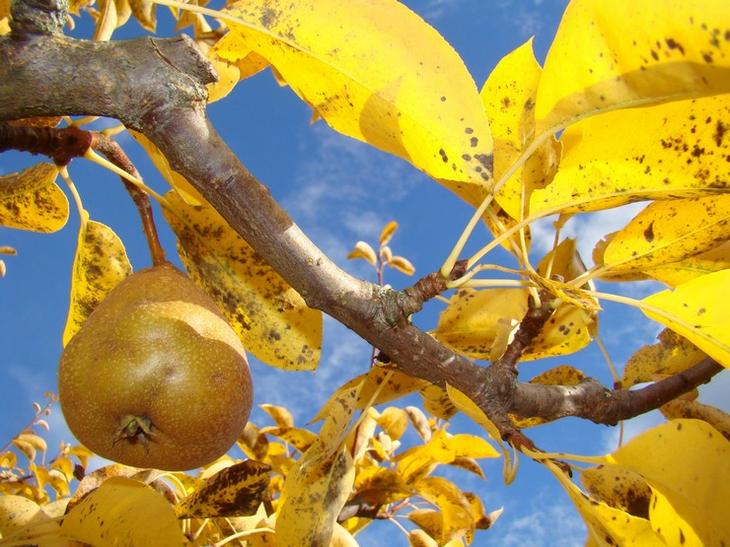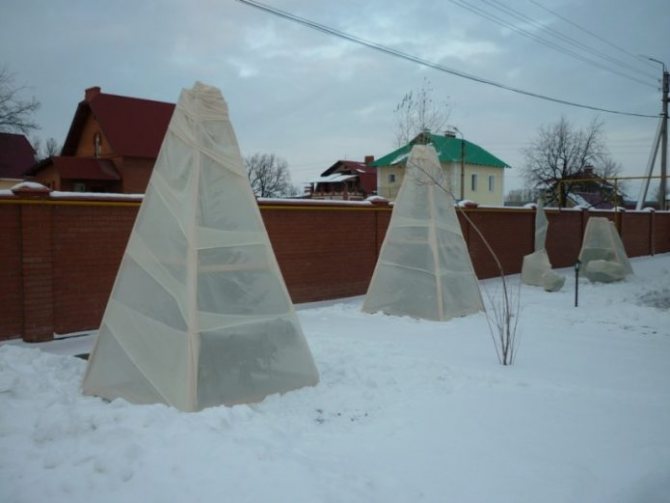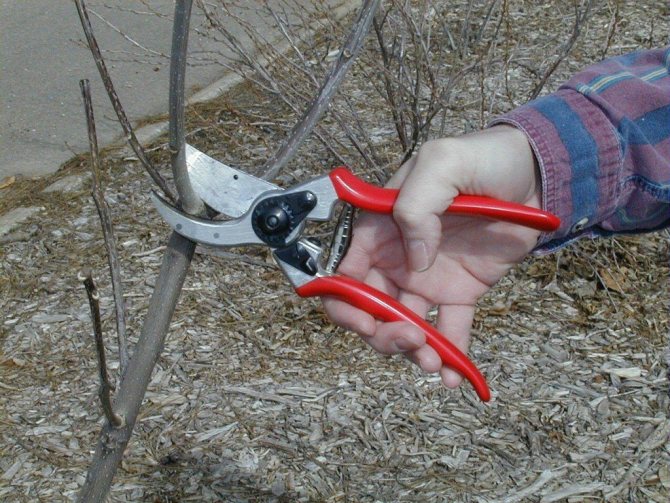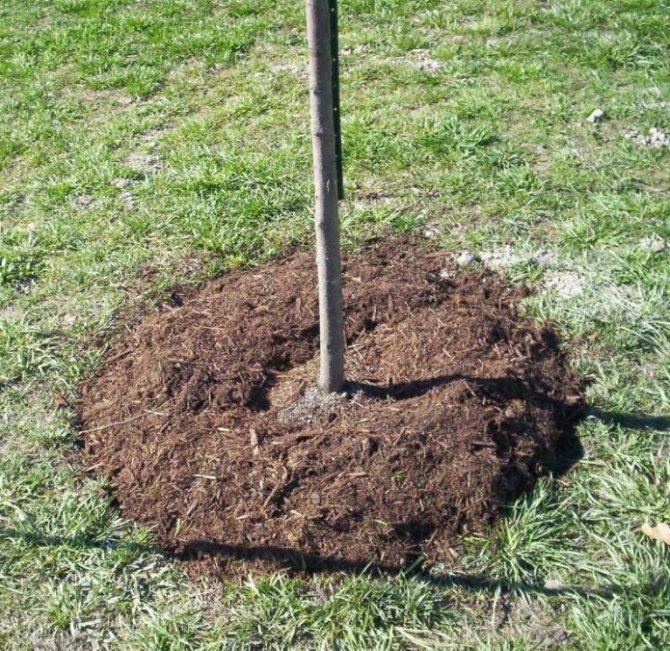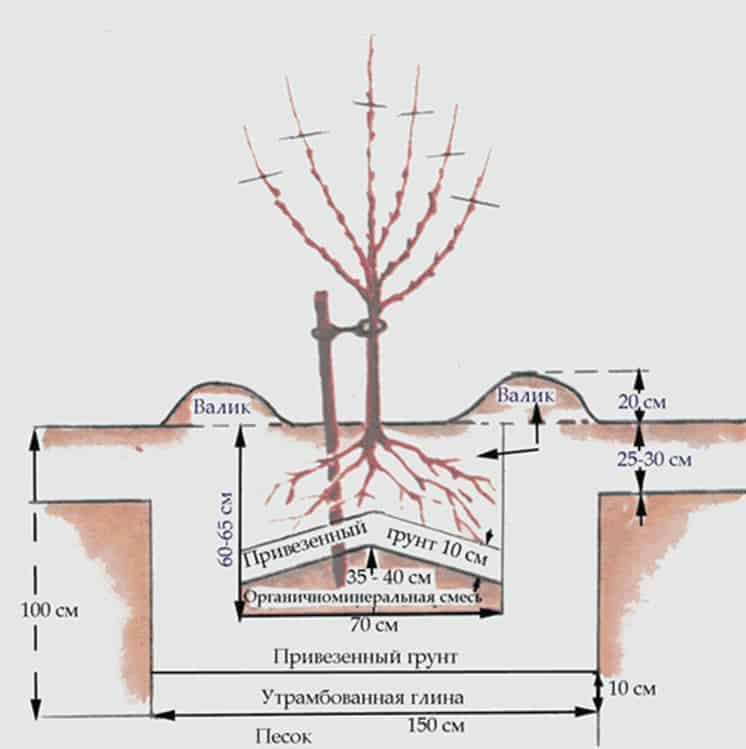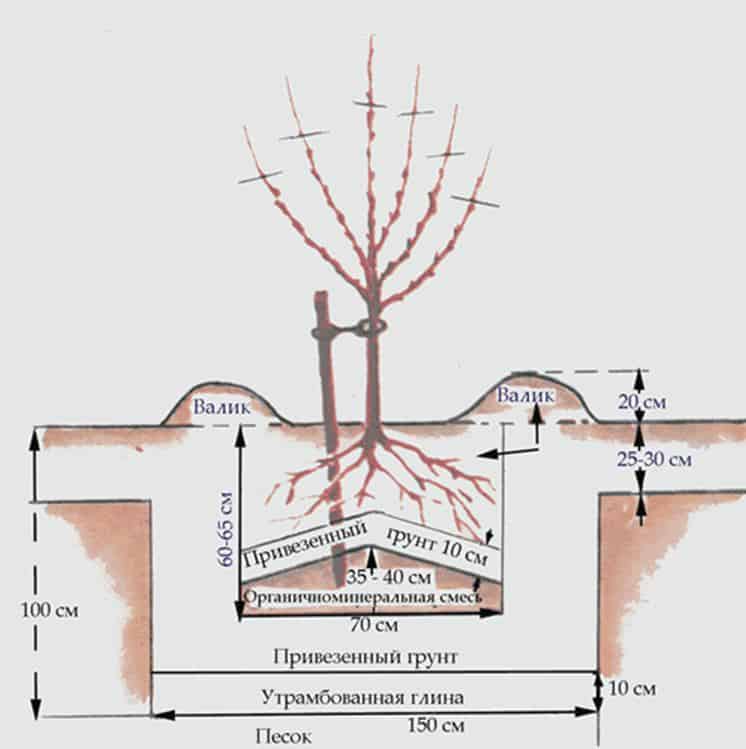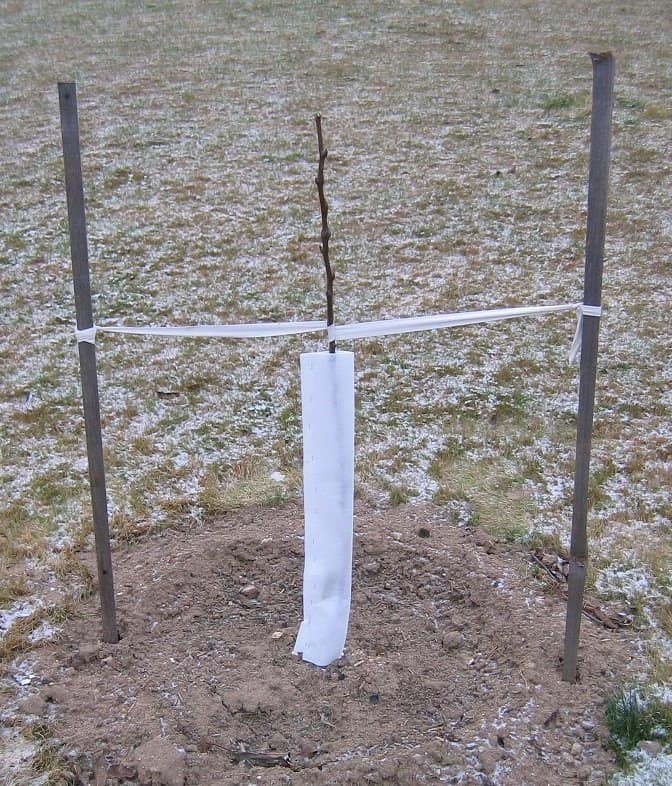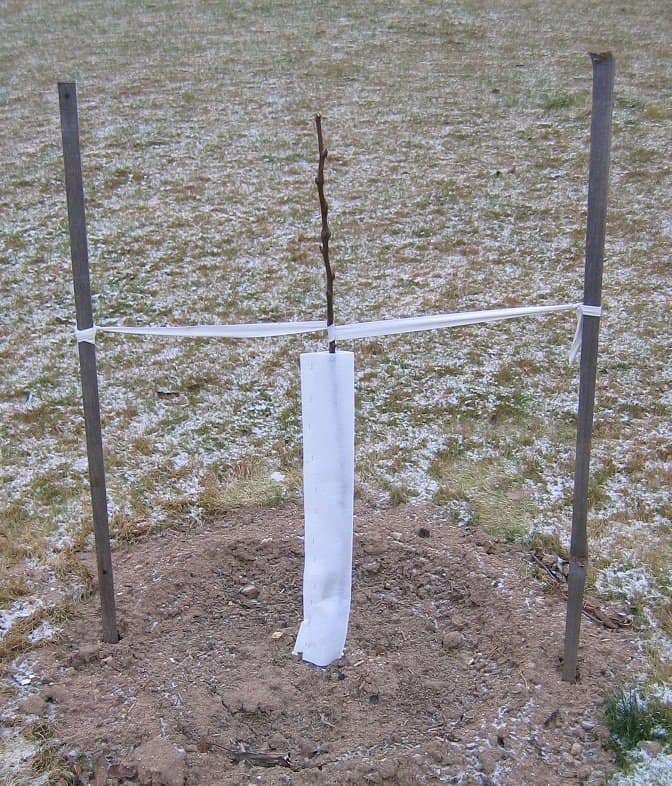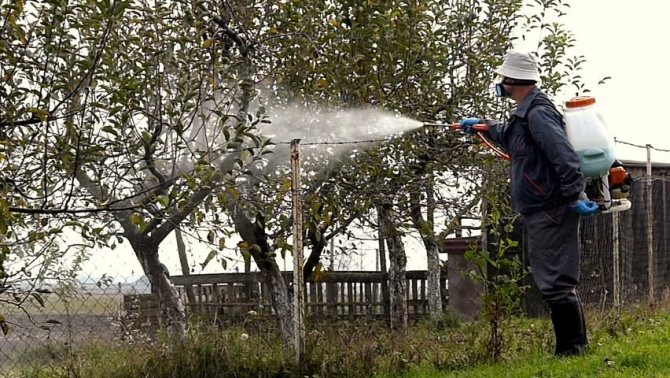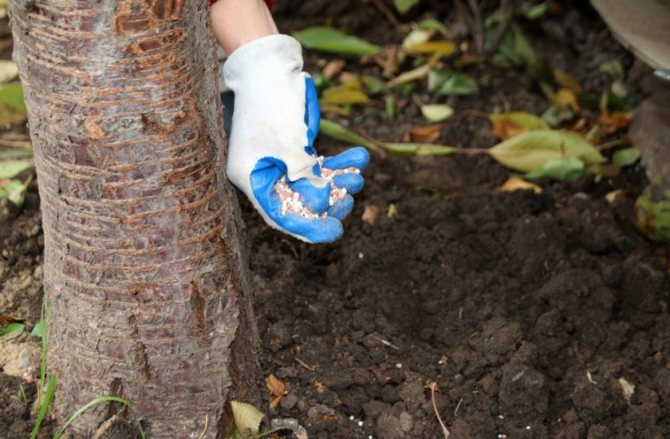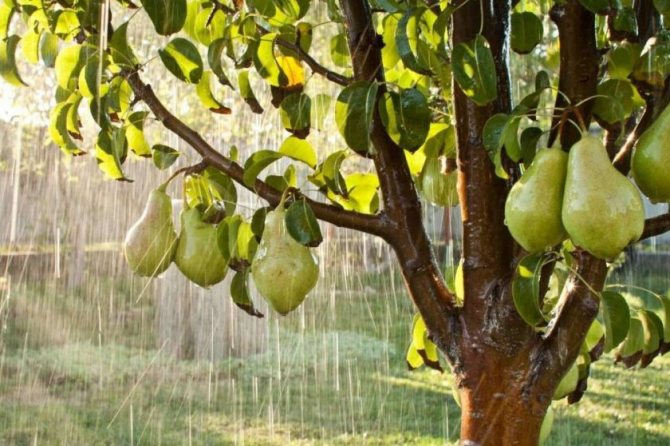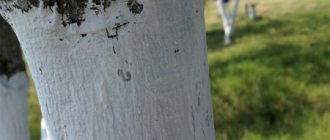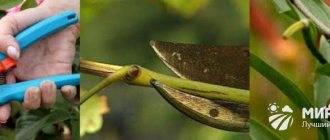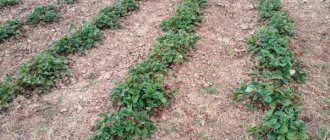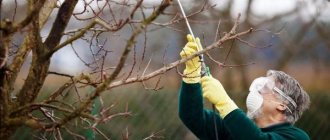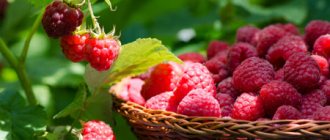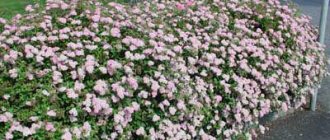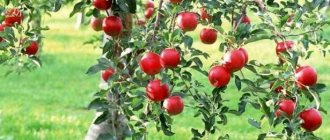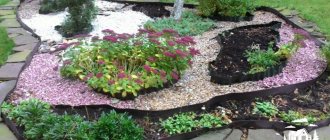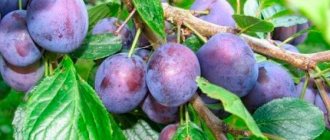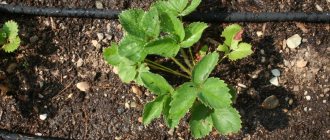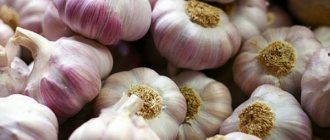How to treat a pear for diseases: in spring and autumn, video and photos
Pear is a sweet and juicy fruit that adults and children love. But in order to enjoy such a fruit from your own front garden, it is necessary to provide appropriate care for this culture. After all, it depends on such steps whether a generous harvest will be taken. How pear processing is carried out and how it can be protected from attacks of various defects and parasites, we will consider below.
Spring preventive treatment
Pear defects and how to deal with them
Pear pests and methods for their destruction
Copperhead and hawthorn
Autumn preventive treatment
Top dressing
Caring for a pear in August and September consists of applying fertilizers, which allows the tree to recuperate after harvest, as well as prepare for winter. You can apply both organic and mineral fertilizers. In the case of minerals, you need to dig a groove around the trunk in a radius of 50-70 cm, into which superphosphate and potassium sulfate are introduced.
Some gardeners spread a pile of humus, compost or peat around the trunk. Such agricultural practice also makes it possible to protect tree roots from frost.
Top dressing of pears in the fall should be aimed not at the growth of trees, but at the successful overwintering of the tree.
Spring preventive treatment
With the onset of spring, every gardener has a lot of trouble in the front garden. After all, you need to have time to prepare the trees for the growing season, so that the whole family can enjoy a rich harvest from their own garden. So, where to start preventive work in the front garden in order to protect the future harvest from diseases and pests:
- They start processing as soon as all the snow has left the garden.
- Spraying pears in spring, as well as apple trees in spring, is carried out completely, they process the tree trunk, crown, and also the near-trunk zone.
- During processing, special attention is paid to places where there are splits and cracks in the bark. The fact is that it is in such places that parasites and fungal spores winter.
- Before spraying, you need to clean the tree from lichen and moss using a wooden scraper, since pupae and larvae of pests are most often located under them.
- In order for the treatment to give a result, use only fresh solution.
- To protect the garden, do the treatment three times per season: in March, before the pear starts flowering, and after flowering.
In addition to processing, the pear needs spring sanitary pruning, which is performed even before the sap flow begins.
Such manipulation is carried out as follows:
- thinning the crown to prevent thickening;
- remove all frozen, defective and broken branches;
- all old branches that have become less fruitful are excised.
In the fight against diseases and parasites, pruning is not the last place. Indeed, it is often in the defective branches that whole colonies of insect parasites are concentrated.
Autumn water-charging irrigation
It is also called "water-charging" irrigation or "winter" irrigation.
Autumn water-charging pear irrigation is another useful activity that allows you to better prepare the tree for winter by “filling” it with moisture.
The fact is that moist soil freezes less and has greater thermal conductivity, in other words, the heat from the lower layers of the soil will warm up the roots of your pear in the cold period.
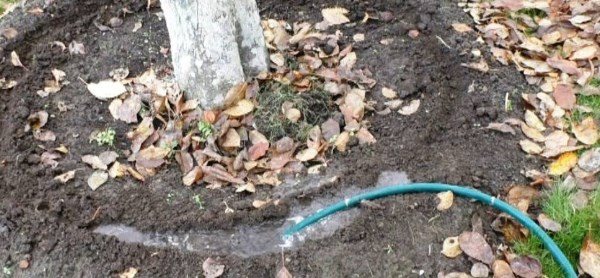
Thus, water-charging watering is recommended for all fruit trees and berry bushes.
What is the time frame?
- With the beginning or after the fall of leaves, on the eve of cold weather (at a positive temperature).
When is winter watering especially necessary?
- In case you have sandy loam soil and autumn does not indulge in frequent and heavy rains, and winter is not very snowy.
It is worth understanding! Of course, if the autumn is very rainy, then you can completely do without water-charging irrigation.
How much water is required?
- Approximately 40-100 liters of water per 1 square meter of the trunk circle (for young - 40-50 liters, for adults - 80-100 liters), i.e. you need to calculate the area according to the crown projection (its perimeter). The more mature and massive your tree is, the more water you need: about 50 to 200 liters.
Advice! Naturally, you don't need to carry any buckets: take the hose and move it around the trunk circle (and first measure how many minutes it takes to get one 10-liter bucket. For example, if in 30 seconds, then 5-10 minutes will be quite enough).
And after watering (for example, the next day) it is very desirable also loosen the soil in the near-barrel circle, because loose earth freezes less.
Of course, if you have a good layer of sod under your pear or grass (lawn) just grows, then you do not need to touch it.
Pear defects and how to deal with them
To get a good harvest, it is not enough just to take proper care of the tree. The pear also needs treatment aimed at destroying various dangerous defects such as:
- scab;
- fruit rot;
- powdery mildew;
- rust.
Scab
The most common pear disease is the scab fungus. This defect hibernates in fallen leaves and under the bark. Such an ailment is dangerous in that it affects not only the leaves of the pear, but also its fruits. You can identify scab by the following signs:
- first, brown spots with a velvet surface appear on the leaves, at first they do not seem harmful in appearance;
- at the same time, there are dark specks on the pear fruits, which then crack;
- further, the specks grow and the fruit is completely deformed.
To defeat such a defect, you need to spray with Bordeaux liquid as a prophylaxis even before bud break. And repeat the processing immediately after flowering.
In addition, as soon as all the foliage has fallen off, it must be collected and taken outside the area for destruction, and the ground around the pear should be sprinkled with a mixture of nitrophene paste.
Fruit rot
The next disease appears as a result of scab activity or parasite attack. The name of this defect is fruit rot.
It manifests itself in the form of brownish spots with yellow crusts on the fruits. Bordeaux liquid, which is sprayed on trees before and after flowering, will help get rid of fruit rot.
Powdery mildew
One of the most dangerous diseases not only for pears, but for the entire orchard, is powdery mildew. This fungus appears as a thin white coating that resembles a harmless cobweb. Powdery mildew affects young shoots and foliage.
First, a white bloom forms on the green mass, then it changes color, becoming gray, with dark small specks.
If the defect is in the active stage of development, then the tree stops growing normally, while the foliage curls and begins to fall off.
You can overcome such a defect if you spray the pear with a solution of colloidal sulfur or copper sulfate. Processing can be carried out both before flowering and after it.
Rust
And the last defect that threatens pears is rust.The defect is able to penetrate deeply into the foliage and form rust spots on them, which grow very quickly, affecting the entire leaf completely.
As a result, the foliage begins to fall off, the tree weakens and if measures are not taken in time, then there may be no harvest for the next growing season. You can destroy rust by spraying the pear with tetracycline while budding or Bordeaux liquid.
It is worth emphasizing that the disease can be avoided if preventive spraying of the pear is carried out with the onset of spring.
Powdery mildew
This disease occurs in a variety of plants and looks the same. But it is caused by different pathogens. Each of them usually specializes in one or several types of plants. Therefore, do not be afraid that oak powdery mildew will migrate to gooseberries. The fungus infects mainly young parts of plants: petioles, leaves, shoots, green berries. Most often, the disease affects apple trees, hawthorn, barberry, elderberry, hazel, rose hips, mountain ash, currant and gooseberry. And from decorative - birch, elm, oak, caragana (yellow acacia), horse chestnut, maples, roses and lilacs.
Symptoms First, small spots appear on the leaves in the form of a white bloom - this is the mycelium of the fungus, which looks like a thick cobweb. It grows quickly, the spores easily break off from the chains and scatter in the form of a white powder, similar to flour. The process continues throughout the summer, and the germinating spores are undemanding to moisture, and the disease spreads even in dry weather.
The concentration of spores in the air and the risk of plant contamination increase steadily from spring to mid-summer. However, in most plants, by this time, the leaves are covered with a protective waxy bloom - cuticle, and it becomes more difficult for fungi to penetrate living tissue.
At the end of the growing season, small black dots become visible on the affected tissue - these are new fruit bodies. They are able to withstand unfavorable conditions, they winter well on plant debris and on the affected parts of plants, and germinate next spring when warm weather sets in. In spring, spores fly out of mycelium bags and infect new plants.
Where the pathogen hibernates. In the garden, spores of pathogenic fungi that cause powdery mildew overwinter on fallen leaves.
What to do. As doctors say, the disease is easier to prevent than to cure. This is also true for powdery mildew - prevention is important here.
1. Autumn remove all fallen leaves from under the diseased trees. And burn them.
2. In October, and then early in the spring, before budding, treat trees and shrubs with copper sulfate.
Apple trees, pears, quince: 100 g per 10 liters of water. The consumption rate is 2–5 liters per tree.
Apricots, peaches, plums, cherries, cherries: 50–75 g per 10 liters of water. Consumption rate - 2-3 liters per tree.
Gooseberries, currants: 50–75 g per 10 liters of water. Consumption rate - 1.5 liters per bush.
3. During the summer, once every 2 weeks add wood ash to the tree-trunk circles of trees and shrubs - 1 liter jar per circle.
4. In extreme heat water the plants - lack of moisture weakens the fruit crops and they become more susceptible to disease.
5.From the end of June stop feeding with nitrogen fertilizers - fattening plants are more susceptible to infection. From mid-summer, add only phosphorus and potassium.
In the summer, if the disease progresses, you can treat the plants with a 0.4% solution of the preparation HOM (copper oxychloride). Re-processing is carried out after 10-14 days. In total, no more than 6 treatments can be carried out per season, and the last one should be no later than 20 days before harvesting.
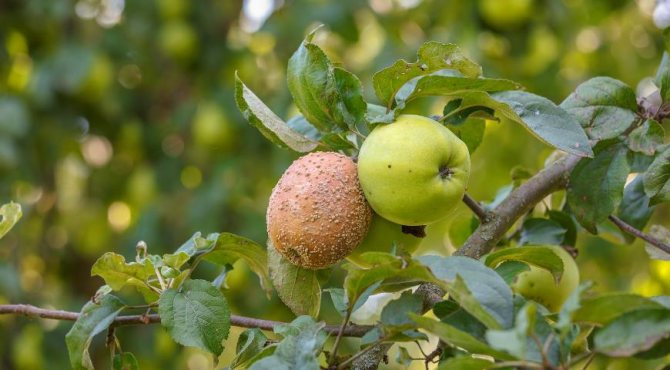

Pear pests and methods for their destruction
With the onset of spring, the orchard needs not only protection from various defects, it is very important to prevent the onset of insect parasites, which can also cause irreparable harm to the pear. At the moment, the following parasites are considered the most dangerous:
- pear mite;
- pear honeydew;
- hawthorn;
- winter moth;
- goldtail.
The pear mite chooses tree buds for wintering, and with the onset of spring it moves to the leaves, where it forms dark gray tubercles.If a tick infects foliage en masse, it dies off, while the process of flower bud development is also disrupted.
To defeat this parasite, it is necessary to spray with colloidal sulfur during the budding period.
And repeat the spraying immediately after the buds have bloomed with antibiotics such as nitrofen and karbofos.
Copperhead and hawthorn
Copperhead pear damages tree branches with a viscous coating of dark color. This substance can cause oppression of the buds, the shedding of fruits and leaves. You can overcome such a pest with the help of nitrophene.
Fruit rot (moniliosis)
Moniliosis is one of the most dangerous diseases of fruit trees. The infection instantly spreads throughout the garden and in a humid summer can destroy up to 80% of the crop. And if left untreated, it can kill a tree. The disease affects apple, pear, quince, mountain ash, plum, cherry plum, cherry, sweet cherry, apricots and peaches.
Symptoms The causative agent of fruit rot is a group of fungi that infect leaves and fruits - they rot right on the tree. The infection is carried by wind, raindrops, insects. First of all, damaged fruits get sick - with cracks, wormholes and eaten by wasps and birds.
Where the pathogen hibernates. The causative agents of the disease for the most part winter in rotten fruits that remain hanging on the trees after harvesting - they mummify and remain sources of infection for 2 years. Gradually, the fungus penetrates the fruit twigs through the stalk and settles there. And in the spring it strikes flowers and young ovary.
When warm, humid weather sets in, spores begin to spread from tree to tree and hit the garden more and more. Moreover, the disease spreads very quickly - the fruits of apple and pear trees completely rot in just 3-5 days after infection, and sporulation begins in 8-10 days.
Autumn preventive treatment
In order not to think about how to treat the pear from diseases and parasites, when they appear, it is best to carry out spring and autumn preventive measures.
With the onset of autumn, when the entire harvest from the front garden will be removed, it is worth taking care of the protection of fruit trees. To do this, the following measures must be taken:
- The first stage includes cleaning the area, weeding and collecting fallen leaves. All this is taken out of the area and burned.
- Then, it's time to clean the wood with a wooden scraper. It is important to completely remove the old cracked bark and any growths in the form of moss and lichen.
- Further, to make sanitary pruning and putty on the cut with a clay chatterbox or garden pitch.
After all the stages of the preparatory work have been completed, you need to spray the tree. For these purposes, copper sulfate is suitable.
Then, the treated pear trunk must be whitewashed with slaked lime. Such an additional measure will help to avoid the settlement of pests under the bark and will make it possible for the tree to overwinter well.
In addition, it is also necessary to process the near-stem zone of the pear. To do this, you need to purchase urea, dilute it according to the instructions and thoroughly water the entire area around the tree.
Urea helps to destroy all pest larvae and fungal spores that winter in the soil.
Cleaning the garden
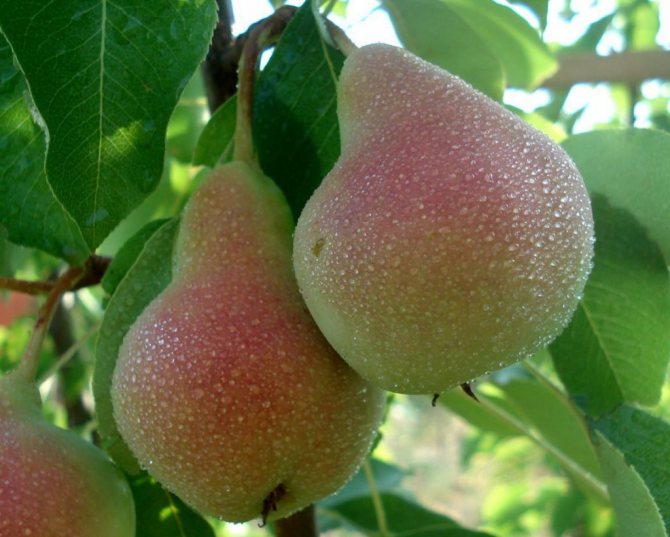

Cooking pears for winter begins in mid-August. Autumn cleaning of the garden is simple, but very demanding work. Garbage that accumulates in the garden during the spring and summer period can become an attractive habitat for animal pests and pathogenic microflora.
- You need to start the August garden cleaning with the circles near the trunk. There, most often, many fallen leaves and fruits accumulate - a habitat and a favorable environment for the reproduction of various pests and tree diseases. All this should be removed.
- Next, we proceed to inspect the pear tree. All rotten fruits, leaves that continue to be on the branches, must be carefully removed. Do not knock them down with a stick. Such actions can seriously damage the branches, and this can cause the pear to become infected with such a dangerous fungal disease as scab. It is better to remove old fruits with a special elongated secateurs.
- Foliage and "rotten" are carefully collected with a rake and disposed of. Some people burn this material in order to exclude the slightest possibility of the appearance and spread of diseases. And more zealous owners usually place this bio-waste in compost pits or heaps. Under the influence of putrefactive bacteria, disinfection occurs, and then the processing of plant residues into useful vermicompost.
- If young root shoots are found in the fall, the shoots should be removed. Leaving them to grow further means weakening the pear, which should not be allowed, especially in the pre-winter season.
- Trunks and large twigs should be carefully examined. If damage is found: small scratches, chips or cracks, they must be carefully cleaned, treated with an antiseptic, for example, copper sulfate. Close the wound with garden pitch, 0.5 - 0.8 cm thick.
Pear care in autumn, preparation for winter
Any gardener can grow a pear. All operations for caring for her are simple, but must be performed. This fully applies to the period after the harvest, on which the success of the plant overwintering depends.
Sanitary measures
Modern pear varieties rarely get sick; less often than an apple tree, a pear is overcome by pests. Nevertheless, even with visible well-being, it cannot be argued that pathogenic organisms and harmful insects are absent in plant residues. Therefore, immediately after harvesting, it is necessary to carefully clean up the area.
If dried or rotten fruits remain on the tree, they must be removed and destroyed. All fallen leaves should be scooped up and burned. True, if there were no signs of tree diseases in the season, the leaves can be sent to compost, well covered with an earthen layer. At the same time, replace the mulch (if any); the old layer can not be removed, but together with it, dig up the soil.
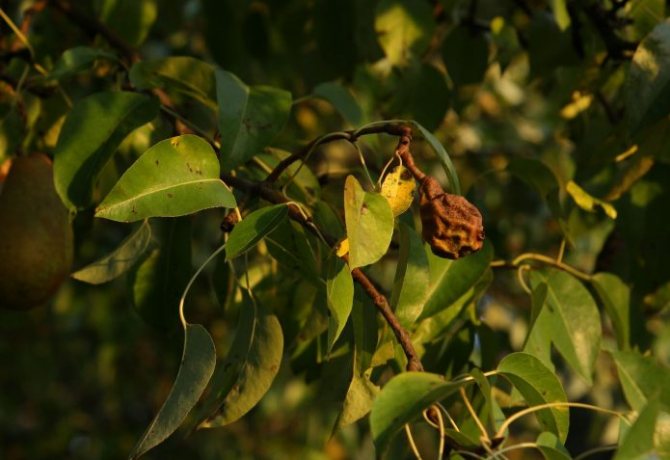

Any dried or rotted fruit on the tree is a source of infection; they must be removed
Trimming, cleaning the trunk
Thorough pruning of the pear tree is best postponed until spring, but light pruning should be done in the fall, immediately after harvesting and harvesting on the site. This applies to the cutting of broken, dried, diseased and the weakest branches.
Any wounds with a diameter of more than 1.2–2 cm must be covered with garden pitch, and branches with a thickness of more than 4–5 cm should not be sawed off before winter.
After sanitary pruning, carefully examine the trunk and bases of the skeletal branches. Any unnatural growths, lichens, bark detachments should be removed using wooden or plastic scrapers and hard brushes. If at the same time it was necessary to inflict serious injuries on the tree, the places left without bark are disinfected with a 1% solution of copper sulfate, and then covered with garden varnish.
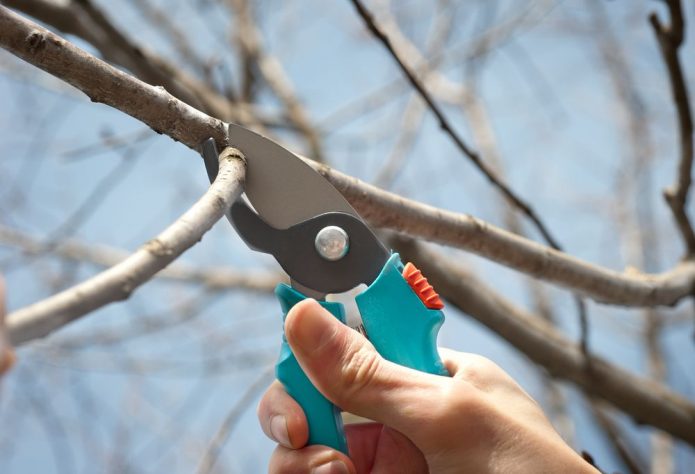

Only not very thick branches can be cut in autumn.
Preventive treatment
After cleaning and pruning, it is advisable to treat the pear from the scab using a 5% urea solution. This event can be excluded only if even the slightest signs of the disease were not observed, and the current summer was not cold and wet. Not only branches are sprayed, but also the trunk, affecting the near-trunk circle.
Great harm to pear trees, especially young ones, is caused by hares and mouse-like rodents in winter. At the latest, the trunks to a height of 1 m can be coated with a clay talker (clay and mullein equally, water to a state convenient for "whitewashing").Instead of applying such a composition, you can wrap the trunks with coniferous spruce branches or hard burlap, but so that the shelter slides to the ground.
Before wrapping, the trunk should still be whitewashed, and to a sufficient height, capturing the bases of the skeletal branches. Whitewashing the tree aims to protect it from sunburn in February-March. To prepare the whitewash composition, 400-500 g of copper sulfate, about 2 kg of lime and 200 g of casein glue are successively diluted in a bucket of water.
Preparing green spaces for spring pruning
First, old and dry branches are removed. They do not give a crop, but they take a lot of nutrients. Pruning is done with a sterile and sharp instrument. Careless actions will bring more problems than any pest. Further procedure:
- carefully remove old growths on the trunk;
- remove swellings, fate with flaky bark;
- the root circle is covered with garden film or tarpaulin so that spores and microorganisms do not fall from the branches to the roots;
- remove the fruits that remain on the tree;
- fallen leaves and debris are removed around the tree.
Cut off shoots, the remains of last year's harvest and other debris are burned, rather than stored on the site. Weeding and digging of the root circle are carried out.
Why you need to process pears
Unfortunately, various insect pests are very fond of pears. The target of an attack can be both the trees themselves and their fruits. Pests often settle on leaves, in the folds of the bark, in buds, and flower ovaries. As the fruit ripens, insect larvae may appear in them. All this can lead to partial or complete loss of yield, often infected fruits simply do not ripen and fall to the ground ahead of time.
Insect pests also affect the general condition of the tree. Often they attack pears with large colonies, which leads to drying out and premature leaf fall. To make matters worse, some insect pests are carriers of various diseases. To avoid all these unpleasant consequences, pear trees are treated with various means several times during the season. This allows the most complete coverage of all cycles of insect development and makes the treatment very effective.
Objectives of the procedure
Pear is a fruit tree. Like other fruit plants, the planting needs regular maintenance. Autumn processing of pears is required. Pest insects love fruit plants. They can attack both the tree itself and the resulting crop. Pests can be found on foliage, bark folds, buds, or flower buds. When fruits ripen, pests are found there as well. This leads to complete or partial loss of yield. When infested, pears fall off before ripening. Carrion becomes a source of infection for healthy plants.
Pests also affect the general condition of the plant. Leaves dry up and fall off ahead of time. It should also not be forgotten that some insects act as carriers of diseases. When an infection is attached, there is a risk that the tree will die.
Spraying from pests in the fall helps to neutralize insects that have gone into the ground for wintering. It is this procedure that reduces the risk of diseases and insects. Additionally, this measure provides resistance to frost. The plant is protected from the negative effects of external factors. Spraying correctly will completely destroy all pests. In the next season, it will be possible to get the maximum possible amount of harvest.
Terms of pear processing in autumn and spring
Pear processing during the season is carried out in several stages:
- Early spring, before the beginning of the growing season.
- In the phase of bud swelling and foliage blooming.
- During the emergence and blooming of flower buds.
- Immediately after the end of flowering.
- 3-4 weeks after flowering.
- In the phase of fruit ripening.
- After harvesting and the end of leaf fall.
In each region, the processing time will be different, so you need to focus not on the calendar, but on the state of the trees, the phases of its growth.
Optimal timing
Autumn processing is not the only one. The procedure is repeated throughout the season. Spraying is carried out:
- before the start of the growing season;
- at the time of swelling of the kidneys;
- during the blooming of buds;
- after the end of flowering;
- when fruit ripens.
Only after that do they start the autumn manipulation. Only a complex effect on the plant is effective. The timing is variable. Directly depend on the region where the pear is grown.
The procedure is carried out after harvest. By the time of processing, the plantation should completely lose its leaves. Spraying is not carried out until leaf fall. Autumn processing is available even for beginners. The main thing is to adhere to all spraying recommendations.
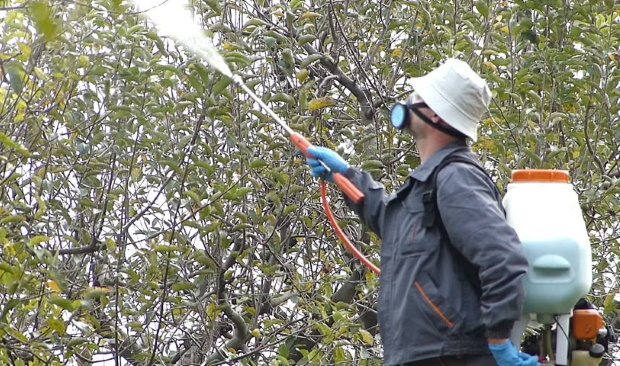

Depending on the region, the last processing is carried out in September-October. For example, in the Urals, the climate is unstable. Winter is harsh and long. It gets cold early, because autumn and spring are short and unexpressed there. The last processing can be carried out immediately after harvest - in early or mid-September. Spraying later will not give the desired result. In the southern regions, the procedure is postponed until October. The climate there is warmer and more stable.
How to treat a pear from pests and diseases
You can treat a pear from pests by many means. For this, insecticides of a wide spectrum of action, acaricides, fungicides, systemic preparations, biological agents are used. In addition, there are a number of folk remedies that help in the fight against insect pests.
How to spray a pear from a scab
Scab is a fungal disease that affects ripening fruits. Visually, the lesions look like a dark velvety bloom in the form of round spots, which often merge with each other. The fungus develops rapidly in spring and summer, at elevated air temperatures and humidity.
To combat the disease, treatment is carried out in several stages:
- Before flowering, trees are treated with a 3% solution of Bordeaux mixture.
- After flowering, the processing is repeated, the concentration of the Bordeaux mixture is reduced to 1%.
- After 2 weeks and 1 month after treatment, the procedure is repeated using the same fungicide.
Instead of the Bordeaux mixture for spraying pears from scab, you can use Raek or Horus. They are used during the same periods. Preparations are prepared in accordance with the instructions on the package.
How to process if pear leaves curl
Leaf curling in pears can be caused by several factors. This is a lack of moisture, and a lack of nutrition, as well as damage to trees by diseases and pests. Among insects, the activity of which can lead to such consequences, the following can be distinguished:
- aphid;
- leaf roll;
- pear pipe runner.
Trees are treated with Decis or Metaphos against aphids, biopreparations Fitoverm or Biobacticillin help well against leafworms. To combat these insect pests, you can also use universal preparations, such as Agravertin, Iskra or Kinmix. They are used, as a rule, before the pear blossoms. Iskra has a milder effect, so it can be used after the trees have faded.
Pear leaves curl: correct processing of plantings
Quite often, gardeners are faced with such a problem when pear leaves begin to curl for no apparent reason.
Pests such as pruritus can lead to such curling of leaves. These are microscopic insects that live in the buds and leaves of pears, feeding on their juice.
In places of damage, small swellings appear, and the leaves of the pear curl and dry out. The difficulty in identifying them is that it is extremely difficult to see such a pest with the naked eye.
To solve the problem with curling pear leaves, trees in the spring after flowering, as well as throughout the summer period, can be treated with various solutions that are made on the basis of colloidal sulfur.
During bud break, an insecticide such as Tedion can be treated. For prevention, we can recommend that you cut and burn branches with damaged leaves. And regular spraying will completely destroy the pests, and the problem with curling leaves will be completely solved.
How to properly handle pears
Before you start treating pears from pests, it is necessary to assess the scope of work and determine the amount of necessary preparations. It can take up to 2 liters of tank mixture to process a young pear; an adult tree may require up to 10 liters of spray composition. When using drugs purchased in specialized stores, you need to study the recommendations indicated on the packaging. The recommended dosages must be strictly observed, an excessive concentration of the active substance can harm the plant.
For processing pears, you need to choose evening time, dry and cool weather. Under such conditions, the solution will not dry longer, it will be well absorbed into the wood tissue, so the effectiveness of its use will be higher. They start processing from the top point of the tree, going around it in a circle and gradually going down to the base. It is necessary to strive for the solution to wet as large an area of the crown as possible. The trunk of the pear and the root zone also need to be processed, since pests can be found in the folds of the bark, on the ground and in the upper layer of the soil.
Pruning young and old trees
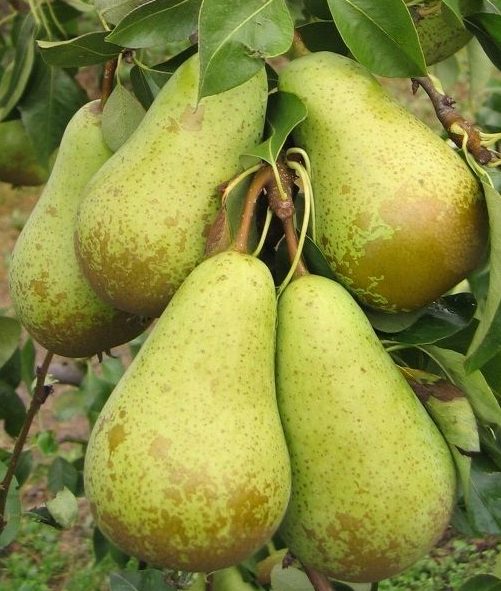

There is a noticeable difference in pruning schemes between young and old trees. In the first years of the pear's life, the correct crown is modeled. In the future, the tree is strengthened by pruning, tiers are formed, and the shape is maintained. Pruning old wood helps to rejuvenate it.
Features of pruning young pear:
- After planting the seedling for permanent residence, the first cutting of the plant is performed. A little pruning will help the plant adapt more easily and crown formation will begin.
- After a year of pear life, pruning develops its branching, skeletal branches are determined, activates the growth of fruit branches.
- The annual growth of the pear is cut by a quarter of its length every year.
- When the pear reaches the age of four, the second tier of the crown begins to form.
- Heavy pruning of young pears can affect the timing of fruiting. A tree with a weak root system and an undeveloped crown spends a lot of time and energy on recovery after a "big" pruning.
Features of pruning an old pear:
- Annual growth rates of an adult pear are cut by half or more. This procedure slows down the structure of the tree, rejuvenates it.
- It is better to prune pears in early autumn, so that the healing process is completed by the cold.
- You should be aware that rejuvenating pruning significantly reduces the fruiting of the tree.
Professional advice
Here are some tips from seasoned gardeners that can help control pear pests:
- Certain preparations, for example, copper sulfate, react with iron, therefore, in some cases, metal buckets cannot be used to prepare a spray solution. The dishes must be clean, after work they must be rinsed with water.
- When processing, it is important not to allow the solution to come into contact with open areas of the body. It is especially necessary to protect the eyes and respiratory organs.
- The strength of the drug used should be proportionate to the degree of damage to the pear.You should not immediately start with "heavy" chemistry, sometimes simple folk remedies are enough to protect plantings from pests.
- Regular feeding increases the resistance of trees to pests and diseases.
- The first spring processing of trees is done after pruning. The same procedure is maintained during the autumn processing of pears with copper sulfate.
- Pear trunks need to be whitened twice a year, in spring and autumn. This is a good protection not only from pests, but also from the bright sun, which causes bark burns.
Methods of using drugs
You need to know how to process a pear in the fall. There are many nuances to consider. Copper sulfate can react with iron. Do not use metal containers for processing. Protective clothing is also worn before the procedure. The drug should not come into contact with open areas of the body.
You need to know that the method of adding the drug is:
In the first case, the drug is poured into the root circle, and in the second, it is used for spraying.
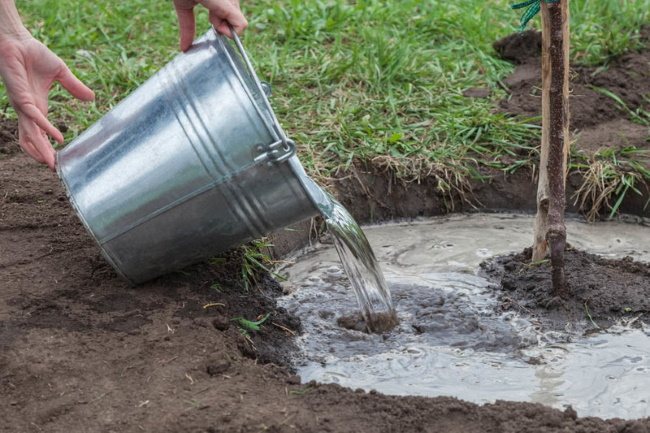

Pear is an undemanding plant. The main thing is to notice deviations in time and carry out processing in a timely manner.
Typical mistakes
Novice gardeners often make mistakes during the preparation of a pear for winter. The most common of these is that they the wrong way to insulate the plant, which often leads to his death. That is why it is recommended to take into account the climate in which the crop is grown without fail.
Some people leave the pruning process for the spring.. But it's not right... In the fall, it is imperative to prune pears and remove dry and diseased branches. Cropping is also carried out to form the crown. If you prune a crop in the fall, it will be less traumatic for the plant and will not negatively reflect on the yield level.
Fertilizer must be applied before the pear is insulated.... This will allow the plant to fully survive even the most severe frosts. For this purpose, the use of superphosphate or potassium phosphate is recommended. Fertilization is carried out while digging the trunk circle. You can also make a moat around the tree, the depth of which is 40 centimeters, and fertilize it. And you can also lay humus in the moat. The procedure is carried out in late autumn, so that nutrients reach the roots only in spring.
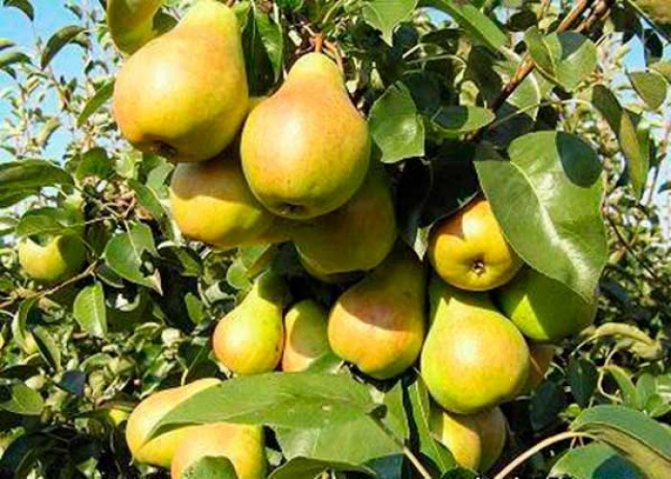

The fruit of the tree is a very nutritious fruit that many people want to grow in their garden. In order to preserve the fertility of the culture, it is necessary to properly care for it in the autumn, as well as properly prepare it for wintering.
Even novice gardeners can do the care, pruning and sheltering of pears in the fall. The main thing is to follow the recommendations.
>

